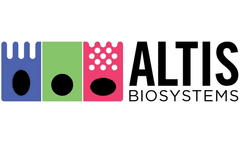Refine by
Physiological Relevance Articles & Analysis
15 articles found
The advent of organoid technology has transformed biomedical research through the development of 3D models that precisely replicate human organ structures and functions in a physiological context. Creative Bioarray establishes itself as a world leader in life science innovation through its complete range of organoid services that enhance drug discovery, disease modeling, and ...
Cell cultures have played a significant role in the academy and pharmaceutical industry, but conventional 2D cultures fail to provide physiological relevance and communication network as compared to in vivo conditions, since they are unable to mimic the complexity of cellular microenvironment, an essential part for the cell behavior and systematic investigation. ...
·Organoids and 3D Cell Cultures 3D cell cultures and organoids provide more physiologically relevant models for studying the cytoskeleton. These models closely mimic the in vivo environment, allowing for a better understanding of cytoskeletal organization and function. ...
Conditional knockout cell lines provide better control of gene expression and provide a more physiologically relevant model for studying the role of target genes and drug discovery. ...
The process of iPSC differentiation to neurons and neuronal cells is of special importance for neurobiology and related disorders, considering the dearth of clinically relevant in vitro models available for research, drug screening and development, as well as the lack of therapy to reverse neuronal damage. Benefits and advantages of iPSC differentiation to neural stem cells ...
On the other hand, whole transcriptome sequencing can not only characterize lncRNAs and circRNAs in samples, but also perform a global analysis of small RNAs, enrich and identify their target genes, and help construct and map ncRNA and mRNA (competitive endogenous RNA, eRNA) regulatory networks to enable the study of relevant physiological and pathological ...
With the current in vivo animal models, it is difficult to determine the mechanism of action of physiologic responses that translate to human medicine, as there are too many variables that can confound a researcher’s ability to draw definitive conclusions. Physiologic Relevance of Immortalized Cell Lines One alternative to in vivo animal ...
Accuracy, speed, and scalability of the framework indicate that it can be used to assess the relevance of other mechanistic relationships implicated in pharmacokinetic-pharmacodynamic phenomena with a lower risk of overfitting datasets and generate large database of physiologically-relevant drug disposition for further integration with machine ...
Altis’ RepliGut® 3D platform involves replication of the three-dimensional complexity of the gut epithelium in which multiple different cell types (including stem, absorptive, and goblet cells) coexist in a physiologically relevant spatial scale and configuration. RepliGut® 3D uses micro-molded collagen gel to make crypt-like structures. ...
These problems with Caco-2 cells led researchers to look for a more physiologically relevant cell type to better represent the tissue they are interested in studying. ...
They bioprinted the constructs using an Allevi 2 bioprinter and the following parameters: Print Speed (mm/s)Tip GaugeTemperature (C)Pressure (PSI)Crosslinking IntensityCrosslinking Time (s)Crosslinking Wavelength (nm) 8 23 15 20-35 7 mW/cm2 ≈ 70% 60 405 To better The other key ingredients where those that made the model biologically relevant. In ...
There is consequently a need for more robust, easy-to-use, cost-effective in vitro models that are physiologically representative of the human intestinal tract and thus predictive of in vivo behavior. ...
With this approach, we were then able to culture anaerobic cells on the RepliGut® to investigate the impact of the microbiome on intestinal and colonic stem cells. A More Physiologically Relevant Model Of course, the human gut comprises not just one cell type, but multiple differentiated cells that each have a specific function. ...
As a result, defects in the organization of the genome by boundary elements are highly relevant for physiological and pathological processes. "Our colleagues at the Georgia Institute of Technology were able to build upon our early discovery that another class of retrotransposon, the SINEB2 element, can provide boundary function at the mouse growth hormone ...
Kremen1 and Kremen2 (Krm1 and Krm2) are transmembrane coreceptors for Dickkopf1 (Dkk1), an antagonist of Wnt/β-catenin signaling. The physiological relevance of Kremen proteins in mammals as Wnt modulators is unresolved. ...









